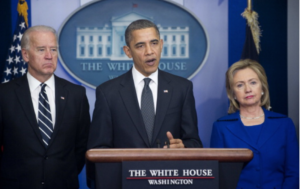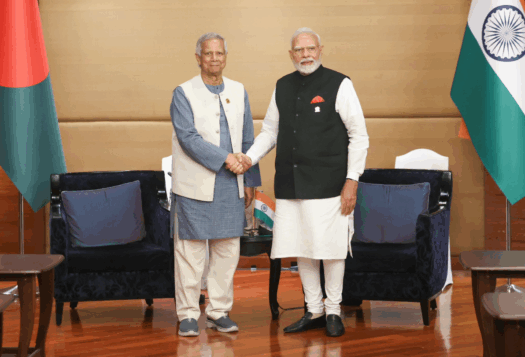
The Indo-U.S. civilian nuclear agreement of 2008 marked a turning point in the history of relationship between India and the United States, the two largest democracies of the world. When announced, the agreement was hailed as a means to align Indian and American policies on nuclear cooperation and nonproliferation as outlined in the act passed by the U.S. Congress entitled “The United States-India Nuclear Cooperation Approval and Nonproliferation Enhancement Act.” Ten years down the line, the agreement has certainly brought major improvements in India’s nuclear stature. However, the same may not be true for the global cause of nuclear nonproliferation, which is anything but “enhanced” under this agreement.
While the agreement transformed India’s status from a nuclear pariah to a strategic partner, it had a far-reaching impact on the regional security situation, particularly with regards to India-Pakistan relations. The following paragraphs will assess the objectives of the agreement as they unfolded over the course of ten years and its impact on the security equation between India and Pakistan.
Stated and Unstated Goals of the Agreement
While the stated objectives of the Indo-U.S. nuclear agreement were to remove core differences, address India’s energy needs, and to integrate it into the mainstream of nonproliferation, both sides clearly had the underlying geostrategic objective of forging an Indo-U.S. strategic partnership to counterbalance China. To attain this objective, the United States tweaked its domestic law and exerted unprecedented pressure on the Nuclear Suppliers Group (NSG) to bend its rules and exempt India from the requirement of full-scope International Atomic Energy Agency (IAEA) safeguards as a condition for nuclear trade. The exemption lifted a decades-old ban on India’s nuclear trade, allowing it to sell and buy nuclear technology with the rest of the world. It provided India de facto recognition as a nuclear weapon state, without having to agree to concrete nonproliferation commitments.
While the agreement transformed India’s status from a nuclear pariah to a strategic partner, it had a far-reaching impact on the regional security situation, particularly with regards to India-Pakistan relations.
Ironically, it did not result in any American nuclear reactor coming to India, since India’s domestic liability law deterred the American nuclear industry. However, it paid New Delhi dividends on various other fronts. India entered into nuclear cooperation agreements with various countries such as Canada, France, the United Kingdom, South Korea, and Japan and also secured uranium supplies from Canada, Russia, Kazakhstan, Namibia, and Australia. Bilateral trade between India and the United States skyrocketed: U.S.-India defense trade increased from approximately $1 billion to over $15 billion since 2008, and according to the U.S. Census Bureau, trade in goods between the United States and India grew from $43 billion in 2008 to whopping $74 billion by the end of 2017—more than a 100 percent increase.
On the strategic front, India has realigned itself more closely, if not completely, with the U.S. foreign policy objectives, where China factor serves as a point of convergence. Due to their shared interest in managing the rise of Beijing, India complemented the Obama administration’s rebalance strategy in East Asia with its own Act East policy under Prime Minister Modi. Nonetheless, India has not given up its non-aligned posture entirely and has continued to maintain an independent policy vis-a-vis Iran and Russia. To the ire of American policymakers, India continues to be the leading oil and defense equipment market for Iran and Russia, respectively, to date.
Implications for Pakistan
[The agreement] has shifted the focus of South Asia’s security debates from substance to mere symptoms, resulting in the absence of results-oriented discussions on longstanding core issues such as Kashmir.
The unprecedented privileges given to India under the civilian nuclear agreement has clear ramifications for Pakistan and strategic stability in the region at large. Pakistan has demanded a similar deal, but reportedly negotiations for the same during President Obama’s second term fell apart. These developments consolidated the de-hyphenation of U.S. policies towards India and Pakistan, which have decreased India’s incentive to engage in serious dialogue with Pakistan. It has shifted the focus of South Asia’s security debates from substance to mere symptoms, resulting in the absence of results-oriented discussions on longstanding core issues such as Kashmir.
Second, the deal has directly and indirectly enabled India to make qualitative and quantitative changes to its nuclear arsenal. While India was required to separate its military and civilian facilities, its separation plan does not make a clear distinction between its civilian and military nuclear facilities, as it was not required that all civilian nuclear facilities be placed under IAEA safeguards. Therefore, the separation plan has resulted in three indistinct categories: civilian safeguarded, civilian unsafeguarded, and military facilities. The potential for India to produce more nuclear weapons also remains unchecked under the deal, in view of its unsafeguarded separated reactor-grade plutonium and its expanding reprocessing capacity. After the deal was finalized, India’s multiple agreements to secure increased uranium supplies to its civilian nuclear program freed up portions of its domestic uranium stockpile to be diverted for weapons purposes. Moreover, the removal of nuclear-related sanctions also enabled India to acquire dual-use technology to advance its defense and space program. These developments had destabilizing impact on the fragile security environment and gave impetus to more aggressive military postures by India.
Third, India and Pakistan have traditionally relied on U.S. intervention for crisis management (e.g. the Kargil crisis in 1999 and the Twin Peaks crisis of 2001-2). While the United States had the opportunity to play a bigger role in resolving regional issues by engaging both countries on equal footing, it has instead chosen to forge a strategic partnership with India. From Pakistan’s perspective, this has tainted the prospect of the United States playing an impartial third-party role in any future crisis between India and Pakistan.
Fourth, as a strategic partner of the United States, India’s status was elevated, whereas Pakistan’s importance as a frontline ally in the war on terror lessened with the shifting priorities of the United States in Afghanistan. After the introduction of the “Af-Pak” policy by the Obama administration, Pakistan was viewed by the United States more as a part of the Afghanistan problem. These developments had direct bearing on India-Pakistan relations by expanding the traditional theater of competition into Afghanistan, where India was aiming to seek a bigger role in Afghan endgame. On the contrary, Pakistan viewed growing Indian presence in Afghanistan as destabilizing due to India allegedly siding with anti-Pakistan factions and promoting covert activities in Pakistan’s Balochistan province via Afghanistan.

Lastly, the deal served a serious blow to the nonproliferation efforts in South Asia, the so-called nuclear flashpoint of the world. The preferential treatment of India in the civilian nuclear agreement and its acceptance into the nonproliferation tent with what many have argued to be too few commitments upended any prospects for positive developments on the nonproliferation front. Since the deal was finalized, India continued to expand its military nuclear program with more sophisticated weapon systems and has defied any prospects of signing the Comprehensive Test Ban Treaty (CTBT). Understandably, in response to this preferential treatment of India, Pakistan has hardened its already firm position on the Fissile Material Cut-Off Treaty (FMCT), where Pakistan has refused to accept an FMCT that does not take into account the issue of existing stockpiles of fissile material. Clearly, the overall favorable situation leaves no incentive for India to engage with Pakistan even on proposals such as a bilateral nuclear test ban agreement or other proposed nuclear confidence building measures.
Conclusion
The signing of the Indo-U.S. civilian nuclear agreement and the following developments expose the fragility of global nuclear norms in view of narrow state interests. On one hand, it has signed away the opportunity to engage states outside of the Nonproliferation Treaty (NPT) on standardized criteria. On the other, it has resulted in a hardening of the conflict situation in South Asia. The ensuing arms race between India and Pakistan has had a destabilizing impact on strategic stability and requires concerted efforts to offset aggravated nuclear risks.
***
Click here to read this article in Urdu.
Image 1: PxHere
Image 2: Saul Loeb via Getty Images


